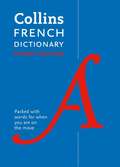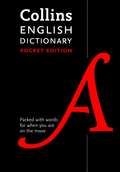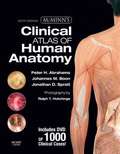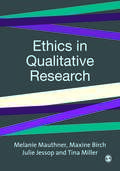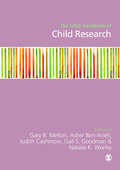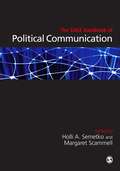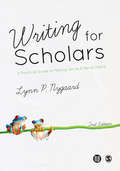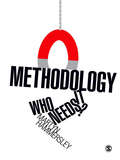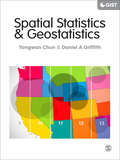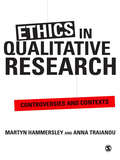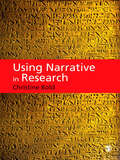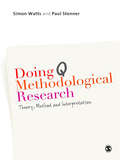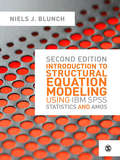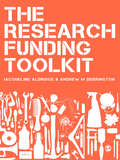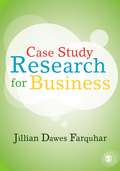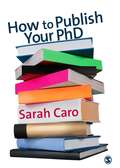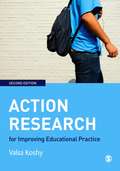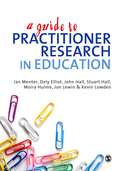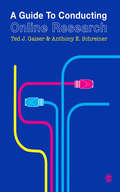- Table View
- List View
DOT symbols: car rental, restaurant (Large Print)
by RnibOn this page there are two US Department of Transport (DOT) pictograms used for signage and travel information: a car rental pictogram and a restaurant pictogram. There is a locator dot shown, which will be at the top left of the page when the image is the correct way up. The car rental pictogram is at the top left of the page. It comprises of a silhouette image of a door key with its blade to the right at the top. Down the page is a stylised image of a car seen from the front. At the top of the car is the windscreen and down the page are the two headlights and two wheels. The restaurant symbol is at the bottom right of the page. It shows a stylised image of a knife and fork. They are seen from above with the forks prongs and the knifes blade to the top of the image. The sharp cutting edge of the knife is to the left.
DOT symbols: bus, ground transportation (UEB Uncontracted)
by RnibOn this page there are two US Department of Transport (DOT) pictograms used for signage and travel information: a bus pictogram and a ground transportation pictogram. There is a locator dot shown, which will be at the top left of the page when the image is the correct way up. The bus pictogram is at the top centre of the page. It shows a stylised image of a single-decker bus seen from the front. At the top of the image are the buses roof and the destination sign. Down the page is the front widow, two circles representing the front lights and further down, the front wheels. At the bottom centre of the page is the ground transportation pictogram. It consists of an image of a taxi seen from the front on the left and a smaller image of a bus as described above, to the right. At the top of the taxi image is its taxi sign and below this are the front window, two headlights and two front wheels.
DOT symbols: bus, ground transportation (Large Print)
by RnibOn this page there are two US Department of Transport (DOT) pictograms used for signage and travel information: a bus pictogram and a ground transportation pictogram. There is a locator dot shown, which will be at the top left of the page when the image is the correct way up. The bus pictogram is at the top centre of the page. It shows a stylised image of a single-decker bus seen from the front. At the top of the image are the buses roof and the destination sign. Down the page is the front widow, two circles representing the front lights and further down, the front wheels. At the bottom centre of the page is the ground transportation pictogram. It consists of an image of a taxi seen from the front on the left and a smaller image of a bus as described above, to the right. At the top of the taxi image is its taxi sign and below this are the front window, two headlights and two front wheels.
Collins French Dictionary (PDF)
by Collins Dictionaries StaffA modern French Dictionary offering excellent coverage of today's French language, culture and usage. Clear presentation and colour make it easy to use and its handy format and durability make it your ideal companion at home, school or on your travels. Features include: âe¢ All the latest words in both languages, such as downloadable, Wi-Fi in English, and empreinte écologique, podcaster in French âe¢ Full GCSE coverage âe¢ An in-depth and up-to-date supplement with information about France, its people and its language to help you take your learning to the next level âe¢ Help with French verbs âe¢ Clear, colour layout, useful examples, language and cultural notes Designed to give travellers, business people and the general user alike all the information they need in a portable, hard-wearing format. It includes all the latest words reflecting changes in modern lifestyle, as well as all the features you would expect from a Collins dictionary: an easy-to-read colour layout, special treatment of key words such as can, that, mettre, que, notes about life in French-speaking countries and warnings on commonly confused words. An in-depth and up-to-date supplement helps you to develop your knowledge of French and your confidence in the language, with a section on common translation difficulties to guide you. There is information on pronunciation and improving your fluency, as well as the words and phrases you will need in different situations, like sending an email or making a phone call. The supplement also gives you an insight into France, its people and other French-speaking countries. Verb tables show all verb forms for the most common French verbs and give examples of how these are used.
Collins English Dictionary (PDF)
by Collins Dictionaries StaffThe most up-to-date and information-packed dictionary of its size available. With spelling, grammar and pronunciation help, plus a practical writing guide, the Pocket Dictionary gives you all the everyday words you need âe" at your fingertips. Up-to-date language coverage along with practical guidance on effective English for everyday use. The text is compiled using the latest information on current English from Collins Corpus âe" our unique and constantly updated 4. 5-billion-word database âe" ensuring the most up-to-date language coverage available. And, with all entry words and spelling forms highlighted in colour and clear, modern definitions, you can be sure to find all the information you need in the quickest time possible. 85,000 words, meanings, and phrases Collins have been pioneers in dictionary publishing since 1819. We are proud to offer an extensive range of dictionaries in multiple formats and languages for all leisure, travel and educational needs.
United Nations Logo (Tactile)
by Adrian FarnsworthThis is a tactile image of the United Nations logo. At the centre of the page is an image of the Earth seen from above showing its lines of latitude and longitude. It is surrounded by two olive branches representing peace. The shapes of the Earths land masses have been omitted in this tactile version.
Symbols & Trademarks (Tactile)
by Adrian FarnsworthThis is a four-page document showing commonly-used symbols and trademarks. There are four on page one, three on each of pages two and three, and two on page four. The Woolmark on page two is a registered trade mark of The Woolmark Company and the Golden Arches logo on page four is a registered trade mark of the McDonald's Corporation.
Clinical Atlas Of Human Anatomy (PDF)
by Peter H. Abrahams Jonathan D. Spratt Johannes M. Boon Ralph T. HutchingsMap out all of the key structures of the human body with examples of real human dissections. . . and easily place them in a clinical context! This popular atlas incorporates an unrivalled collection of cadaveric, osteological, and clinical images with surface anatomy models, interpretive drawings, orientational diagrams, and diagnostic images - emphasizing a well-rounded visual perspective of a real human body as seen by modern doctors. The 6th Edition offers new endoscopic images, 250 new dissection photos (including eight pages of new dissections on lymphatics), and 300 new clinical thumbnails. A bonus DVD - new to this edition - includes 1,000 additional photos not found in the text, as well as questions and answers that accompany each section from the book. Displays X-ray, MR, and CT images next to corresponding dissections, showing how to recognize anatomic structures in diagnostic images. Presents interpretive drawings to help you differentiate between structures with a similar appearance (i. e. , veins, arteries, and nerves). Offers orientational diagrams that make it easier to relate the dissections in the text to real experiences in the lab. Provides an unobstructed view of the artwork by using a numbered labeling system, which also allows you to self-test by covering up the key and identifying each numbered structure yourself. Presents 300 new clinical thumbnails - with relevant clinical notes and additional images on the DVD - that emphasize the clinical relevance of images depicted and demonstrate their clinical relevance. Offers 250 new dissection photos that enhance the overall quality and scope of the images shown #65533; eight pages of new dissections on lymphatics #65533; 50 new illustrations reflecting the increasing use of diagnostic imaging in anatomy teaching #65533; and 20 new endoscopic images to reinforce memorization of structures. Features a bonus DVD with 1,000 clinical photos not found in the text. . . more information on clinical correlations. . . and questions and answers that accompany each section of the book.
Ethics in Qualitative Research
by Tina Miller Maxine Birch Julie Jessop Dr Melanie MauthnerThis fresh, confident second edition expands its focus on the theoretical and practical aspects of doing qualitative research in light of new ethical dilemmas facing researchers today. In a climate of significant social and technological change, researchers must respond to increased ethical regulation and scrutiny of research. New sources, types of data and modes of accessing participants are all challenging and reconfiguring traditional ideas of the research relationship. This engaging textbook explores key ethical dilemmas - including research boundaries, informed consent, participation, rapport and analysis - within the context of a rapidly changing research environment. The book effectively covers the ethical issues related to the data collection process, helping readers to address the ethical considerations relevant to their research. This fully updated new edition: - Maps the changing and increasingly technology-reliant aspects of research relationships and practices - Provides researchers with guidance through practical examples, enabling those engaged in qualitative research to question and navigate in ethical ways This book is essential reading for all those engaged in qualitative research across the social sciences.
The SAGE Handbook of Child Research
by Dr Gary B. Melton Gail S. Goodman Mr Asher Ben-Arieh Ms Judith Cashmore Ms Natalie K. Worley"It is refreshing to see a book such as this which is both broad in its conceptualization of the field of child research and deep in its focus. The volume's editors are paragons of awareness when it comes to the need for interdisciplinary research and theory to illuminate the lives and experience of children." - James Garbarino, Loyola University Chicago "Covers a satisfying and unprecedentedly wide range of research relating to childhood. The contributors include many eminent international scholars of childhood, making the book a valuable resource for child researchers. Child advocates will also find the book to be invaluable in their efforts to improve children’s well-being, and to change policies and practices for the better." - Anne Smith, University of Otago "A really scintillating collection that will provide a lasting perspective on child studies - stimulating and comprehensive!" - Jonathan Bradshaw, University of York In keeping with global changes in children's social and legal status, this Handbook includes examination of children as family members, friends, learners, consumers, people of faith, and participants in law and politics. The contributors also discuss the methodological and ethical requirements for research that occurs in natural settings and that enables children themselves to describe their perspective. The book is divided into three parts: Part I: Setting-Specific Issues in Child Research Part II: Population-Specific Issues in Child Research Part III: Methods in Research on Children and Childhood
The SAGE Handbook of Political Communication
by Dr Margaret Scammell Holli A SemetkoThis authoritative and comprehensive survey of political communication draws together a team of the world's leading scholars to provide a state-of-the-art review that sets the agenda for future study. It is divided into five sections: Part One: explores the macro-level influences on political communication such as the media industry, new media, technology, and political systems Part Two: takes a grassroots perspective of the influences of social networks - real and online - on political communication Part Three: discusses methodological advances in political communication research Part Four: focuses on power and how it is conceptualized in political communication Part Five: provides an international, regional, and comparative understanding of political communication in its various contexts The SAGE Handbook of Political Communication is an essential benchmark publication for advanced students, researchers and practitioners in the fields of politics, media and communication, sociology and research methods.
Writing for Scholars: A Practical Guide to Making Sense & Being Heard
by Lynn NygaardLecturers request your electronic inspection copy here. Academics are not just researchers, but writers too. Using her many years of practical experience gained as a teacher and editor, Lynn Nygaard guides you through the whole process of writing and presenting your research in order to help you make your voice heard within the academic community. Grounded in real world advice rather than abstract best practice, Nygaard demonstrates a number of approaches to writing in order to help you identify those most suited to your own project. This updated new edition includes: Revised and expanded sections in each chapter More focus on the social sciences A more international focus Updated discussions on publishing practices Annotated biographies for each chapter New illustrations and images Additional practical tips and exercises From defining your audience, to forming your argument and structuring your work, this book will enable you to communicate your research passionately and professionally. Lynn Nygaard is Special Adviser on Project Development and Publications at the Peace Research Institute Oslo (PRIO). Companion Website study.sagepub.com/nygaardwritingforscholars Visit the companion website for additional online resources! This updated new edition includes: Revised and expanded sections in each chapter More focus on the social sciences A more international focus Updated discussions on publishing practices Annotated bibliographies for each chapter New illustrations and images Additional practical tips and exercises From defining your audience, to forming your argument and structuring your work, this book will enable you to communicate your research passionately and professionally.
Methodology: Who Needs It?
by Martyn HammersleyThe literature on social science methods and the issues surrounding them has grown massively and continues to increase. Yet many social scientists are ambivalent about methodology. For some, it plays a central, perhaps even an all-encompassing, role; while, for others, it is desirable only in small amounts, or indeed is regarded as an irrelevance, as a distraction from actually doing research. In this book, Hammersley argues that, in large part, this reflects and is part of a wider problem: the gradual decline of a previously influential academic model of inquiry. This has occurred as a result of ideological challenges and the erosion of the institutional conditions that support academic work. He defends this model, spelling out the demands it places upon social scientists, and examining such issues as the proper role of methodology, the nature of objectivity, the false idea that social scientists should be intellectuals or social critics, the dialectic of academic discussion, the ethics of belief, and the limits of academic freedom. More broadly, he also questions the role of the social research within society and what it means to be a social scientist in the 21st century. Hammersley's book is engagingly written and controversial. It tackles the major issues of contemporary social research methodology head on and is an essential read for anyone with an interest in this field.
Spatial Statistics and Geostatistics: Theory and Applications for Geographic Information Science and Technology
by Daniel A. Griffith Yongwan Chun"Ideal for anyone who wishes to gain a practical understanding of spatial statistics and geostatistics. Difficult concepts are well explained and supported by excellent examples in R code, allowing readers to see how each of the methods is implemented in practice" - Professor Tao Cheng, University College London Focusing specifically on spatial statistics and including components for ArcGIS, R, SAS and WinBUGS, this book illustrates the use of basic spatial statistics and geostatistics, as well as the spatial filtering techniques used in all relevant programs and software. It explains and demonstrates techniques in: spatial sampling spatial autocorrelation local statistics spatial interpolation in two-dimensions advanced topics including Bayesian methods, Monte Carlo simulation, error and uncertainty. It is a systematic overview of the fundamental spatial statistical methods used by applied researchers in geography, environmental science, health and epidemiology, population and demography, and planning. A companion website includes digital R code for implementing the analyses in specific chapters and relevant data sets to run the R codes.
Ethics in Qualitative Research: Controversies and Contexts
by Anna Traianou Martyn HammersleyAll social researchers need to think about ethical issues. Their salience has recently been increased by the pressures of ethical regulation, particularly in the case of qualitative research. But what are ethical issues? And how should they be approached? These are not matters about which there is agreement. Ethics in Qualitative Research explores conflicting philosophical assumptions, the diverse social contexts in which ethical problems arise, and the complexities of handling them in practice. The authors argue that the starting point for any discussion of research ethics must be the values intrinsic to research, above all the commitment to knowledge-production. However, the pursuit of inquiry is rightly constrained by external values, and the book focuses on three of these: minimising harm, respecting autonomy, and protecting privacy. These external values are shown to be far from unequivocal in character, often in conflict with one another (or with the commitments of research), and always subject to situational interpretation and practical judgment. Nevertheless, it is contended that in the present challenging times it is essential that qualitative researchers uphold research values. Martyn Hammersley is Professor of Educational and Social Research at The Open University. Anna Traianou is Senior Lecturer in the Department of Educational Studies, Goldsmiths, University of London.
Using Narrative in Research
by Christine BoldUsing Narrative in Research by Christine Bold provides an accessible, easy-to-understand guide to the theory and practice of the use of narrative in research. Written with those new to narrative in mind, this book will enable readers to understand the origins of narrative traditions and to plan and carry out a narrative study of their own. Christine Bold's book examines narrative approaches across a range of research contexts and disciplinary boundaries and will be of equal value to practitioners and academic students and researchers alike. Drawing on a range of real-life examples of narrative studies, Using Narrative in Research will enable readers to provide a sound justification for adopting a narrative-based approach and will help them to write about and write up narrative in research. This book examines: • How we design research projects with a narrative approach • Ethics • Narrative thinking • Collecting narrative data • Analysing narrative data • Representation in narrative analysis • Reporting and writing up narrative research.
Doing Q Methodological Research: Theory, Method & Interpretation
by Professor Paul Stenner Simon WattsThis book is a simple yet thorough introduction to Q methodology, a research technique designed to capture the subjective or first-person viewpoints of its participants. Watts and Stenner outline the key theoretical concepts developed by William Stephenson, the founder of Q methodology, including subjectivity, concourse theory and abduction. They then turn to the practicalities of delivering high quality Q methodological research. Using worked examples throughout, the reader is guided through: • important design issues • the conduct of fieldwork • all the analytic processes of Q methodology, including factor extraction, factor rotation and factor interpretation. Drawing on helpful conceptual introductions to potentially difficult statistical concepts and a step-by-step guide to running Q methodological analyses using dedicated software, this book enables interested readers to design, manage, analyse, interpret and publish their own Q methodological research.
Introduction to Structural Equation Modeling Using IBM SPSS Statistics and Amos
by Niels J. BlunchThis comprehensive Second Edition offers readers a complete guide to carrying out research projects involving structural equation modeling (SEM). Updated to include extensive analysis of AMOS' graphical interface, a new chapter on latent curve models and detailed explanations of the structural equation modeling process, this second edition is the ideal guide for those new to the field. The book includes: Learning objectives, key concepts and questions for further discussion in each chapter. Helpful diagrams and screenshots to expand on concepts covered in the texts. Real life examples from a variety of disciplines to show how SEM is applied in real research contexts. Exercises for each chapter on an accompanying companion website. A new glossary. Assuming no previous experience of the subject, and a minimum of mathematical knowledge, this is the ideal guide for those new to SEM and an invaluable companion for students taking introductory SEM courses in any discipline. Niels J. Blunch was formerly in the Department of Marketing and Statistics at the University of Aarhus, Denmark
The Research Funding Toolkit: How to Plan and Write Successful Grant Applications
by Jacqueline Aldridge Professor Andrew M DerringtonWriting high quality grant applications is easier when you know how research funding agencies work and how your proposal is treated in the decision-making process. The Research Funding Toolkit provides this knowledge and teaches you the necessary skills to write high quality grant applications. A complex set of factors determine whether research projects win grants. This handbook helps you understand these factors and then face and overcome your personal barriers to research grant success. The guidance also extends to real-world challenges of grant-writing, such as obtaining the right feedback, dealing effectively with your employer and partner institutions, and making multiple applications efficiently. There are many sources that will tell you what a fundable research grant application looks like. Very few help you learn the skills you need to write one. The Toolkit fills this gap with detailed advice on creating and testing applications that are readable, understandable and convincing.
Case Study Research for Business
by Jillian Dawes FarquharElectronic Inspection Copy available for instructors here The only case study research textbook written exclusively for students of Business and related disciplines. Using a step-by-step approach, Case Study Research for Business takes you right through the case study research process from research design and data collection using qualitative and quantitative methods, to research analysis, writing up and presenting your work. Key features: - Takes a multidisciplinary approach to case study research design by drawing on research philosophies to improve student understanding of these critical research traditions and hence provide firmer theoretical foundations for their research - Coverage of contemporary topics such as research ethics and access - Packed with practical examples from all areas of business - Pedagogical features include vignettes, exercises and 'cases' which directly relate to business research Case Study Research for Business will prove a valuable resource for undergraduate, postgraduate and research students of business and related disciplines.
Statistics for Research: With a Guide to SPSS
by George ArgyrousThis fully updated edition of Statistics for Research explains statistical concepts in a straight-forward and accessible way using practical examples from a variety of disciplines. If you're looking for an easy-to-read, comprehensive introduction to statistics with a guide to SPSS, this is the book for you! The new edition features: - Clear explanations of all the main techniques of statistical analysis - A brand new student-friendly, easy-to-navigate design - Even more step-by-step screenshots of SPSS commands and outputs - An extensive glossary of terms, ideal for those new to statistics - End of chapter exercises to help you put your learning into practice - A new, fully updated companion website (www.uk.sagepub.com/argyrous3) with comprehensive student and lecturer resources including additional, discipline specific examples and online readings and WebCT/Blackboard quizzes. This is the ideal textbook for any course in statistical methods across the health and social sciences and a perfect starter book for students, researchers and professionals alike.
How to Publish Your PhD
by Sarah CaroHow to Publish Your PhD is the first book to provide emerging researchers with a comprehensive and authoritative guide to publishing their research. Drawing on nearly twenty years in the book business Sarah Caro explains in a clear and accessible way the key issues facing the would-be author. Within the context of today's fast changing world where new technologies and increasing globalization continue to impact on academia and the world of academic publishing, key issues are discussed ranging from whether publishing your PhD is always the best way to enhance your career prospects to whether you should focus on journals or books. A wealth of practical information and advice is included on: choosing a publisher revising your thesis putting together a proposal surviving the review process negotiating a contract working with your publishers marketing department. The book is designed to be an easy to use, one stop guide with examples, chapter summaries and further reading. It will be an invaluable resource for emerging researchers across the broadest range of the humanities and social sciences and for all those teaching and advising them, in Europe and the US. 'Every PhD student should buy a copy of How to Publish your PhD before and not after they enrol for a doctoral degree. Informative, practical and insightful, Sarah Caro will become the mentor of every successful PhD student. A mine of information and practical advice, this text is the definitive nuts-and-bolts manual on how to do it. A safe and sure guide' - Bryan S. Turner, Alona Evans Distinguished Visiting Professor, Wellesly College
Action Research for Improving Educational Practice: A Step-by-Step Guide
by Dr Valsa KoshyWhich topics are right for Action Research in an education context? How do you go about planning a project, collecting and analysing your data? What's the best way to present your research findings to parents, colleagues or funding bodies? Whether you are a busy teacher doing research in your classroom, an undergraduate starting your research project, or a Masters level or education doctorate student writing up your dissertation, this step-by-step guide takes you through every stage involved in carrying out Action Research. In this brand new edition, you will find additional guidance on: - philosophical underpinnings of Action Research - the challenges of being an insider researcher - searching and analysing literature from the internet - children's participation and children's rights in action research projects in educational settings - validity and authenticity in action research - a new chapter on writing for publication - an action research planning sheet. This book draws on Valsa Koshy's extensive experience of supervising researchers at all levels, and includes examples of Action Research carried out by practitioners across a range of topics and age groups. Case studies include UK and international examples, allowing you to reflect on multiple perspectives of Action Research in education. Those new to Action Research, and those looking for a straightforward explanation of the methods involved, will find this book invaluable. Valsa Koshy is Professor of Education and Director of a Research and Development Centre at Brunel University.
A Guide to Practitioner Research in Education
by Dr Dely Elliot Jon Lewin Kevin Lowden Moira Hulme Prof Ian J MenterThis book is a guide to research methods for practitioner research. Written in friendly and accessible language, it includes numerous practical examples based on the authors' own experiences in the field, to support readers. The authors provide information and guidance on developing research skills such as gathering and analysing information and data, reporting findings and research design. They offer critical perspectives to help users reflect on research approaches and to scrutinise key issues in devising research questions. This book is for undergraduate and postgraduate students, teachers and practitioners in practitioner research development and leadership programmes. The team of authors are all within the School of Education at the University of Glasgow and have significant experience of working with practitioner researchers in education.
A Guide to Conducting Online Research
by Anthony E Schreiner Ted J GaiserA Guide to Conducting Online Research is designed to support students, academics and research practitioners in using technology to conduct their research. The book begins by looking at what questions to ask and how to prepare to conduct online research, then concentrates on particular technologies and how to employ them effectively, before concluding with a discussion of the peculiarities of conducting research in the online environment. Practical advice is offered on common issues and problems, such as: - How to decide which application is best for your research purposes? - What can be done to guarantee the anonymity of research participants? - What kinds of challenges do firewalls present and how can they be mitigated? A Guide to Conducting Online Research provides a wealth of advice, explanation, instruction, self-help tips and examples, making this a helpful resource for anyone using technology in conducting their research.

